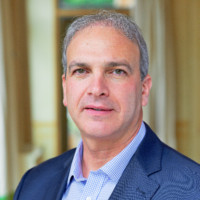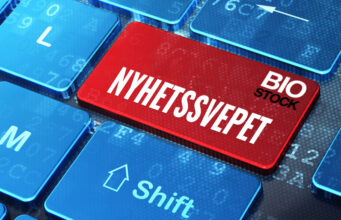
Saniona kommenterar den potentiella börsnoteringen i USA
Den 30 november släpptes Sanionas Q3-rapport och utöver att summera framgångsrika kapitalanskaffningar och viktiga studieframgångar under kvartalet, gör rapporten klart att bioteknikbolaget överväger att notera aktien på Nasdaq USA. BioStock fick tag på vd Rami Levin på huvudkontoret i Boston, Massachusetts, som berättar mer om de potentiella planerna.
Sanionas primära läkemedelskandidat Tesomet – en fastdoskombination av den trefaldiga monoaminåterupptagshämmaren tesofensine och betablockeraren metoprolol – utvecklas för behandling av de sällsynta sjukdomarna hypotalamisk fetma (HO) och Prader Willys Syndrom (PWS).
Den 23 november kommunicerade bolaget positiva topline-resultat från den öppna förlängningen av fas II-studien med Tesomet i HO. Resultaten förstärker Tesomets potential att hantera flera viktiga symptom i sjukdomsbilden för HO, dels viktuppgången och dels den nedsatta metabolismen som kan leda till allvarliga diabeteskomplikationer.
Dessförinnan, den 9 oktober, mottog Saniona ett skriftligt pre-IND-besked (Investigational New Drug) från det amerikanska läkemedelsverket (FDA). Återkopplingen från FDA angående Tesomet för PWS och HO rekommenderade att en stödjande fas IIb-studie följt av en fas III-studie skulle planeras.
I PWS räknar Saniona med att påbörja fas 2b-studien under första halvan av 2021. I HO arbetar Saniona med en plan som man avser att lägga fram för FDA, i syfte att säkerställa att, om Tesomet erhåller regulatoriskt godkännande för HO, att dess användning endast begränsas till lämpliga patienter. När detta har åtgärdats räknar Saniona med att inleda HO fas 2b-studien under första halvåret 2021.
Ökade utvecklingskostnader när man gasar på i projekten
Sanionas rapport för det tredje kvartalet publicerades den 30 november och summerat så blev rörelseresultatet -40,9 miljoner kronor (-26) och resultatet efter skatt blev -52,7 miljoner kronor (-27,7), främst hänförligt till ökade utvecklings- och personalkostnader.
Detta är väntat för ett biofarmaceutiskt bolag i utvecklingsfas när det avancerar till större och längre kliniska prövningar, vilket krävs för att nå myndighetsgodkännande. Det är därför biofarmaceutiska bolag inte kan bedömas enligt samma mall som bolag i andra branscher; att utveckla nya läkemedel kräver betydande förskottsinvesteringar.
Till exempel uppskattade en artikel som publicerades tidigare i år i Journal of the American Medical Association att biofarmaceutiska bolag spenderar cirka 1 miljard USD för att få vart och ett av sina nya läkemedel på marknaden, när även utgifter för misslyckade projekt har medräknats. Dock så kan mycket framgångsrika läkemedel som uppnår så kallad ”blockbuster”-status generera mer än 1 miljard USD i intäkter årligen.
Det bör också noteras att processen i läkemedelsutveckling är tidskrävande och behovet av ytterligare kapital under hela utvecklingen är större än i andra industrier. När ett bolag avancerar genom faserna i sin kliniska utveckling leder det till högre kostnader. Vad gäller Saniona så kan de ökade utvecklingskostnaderna under tredje kvartalet till stor del relateras till förberedelser inför produkttillverkning och nödvändig klinisk forskning för att kunna inleda fas 2b kliniska prövningar i PWS och HO, som är mycket större och dyrare än tidigare kliniska studier.
Vd kommenterar
I Q3-rapporten nämner Sanionas vd Rami Levin att man överväger möjligheten notera bolagets aktie på Nasdaq USA, detta utöver den redan befintliga noteringen på Nasdaq Stockholm. BioStock kontaktade Levin för att få veta mer om detta.

Rami Levin, you are considering a parallel listing in the United States. Have you seen an interest from investors in the US that causes you to consider this option?
– Yes. Already in the directed share issue in August we attracted U.S. based healthcare institutional investors RA Capital Management as well as Pontifax Venture Capital, New Leaf Venture Partners and other U.S. and international investors. We have also seen interest and received inquiries from other U.S. institutional investors that have a deep understanding of our industry and the dynamics of the health care market – especially the U.S. market which will be our initial focus for the Tesomet programs.
In the report, you mention some benefits that a dual listing brings. Can you tell BioStock readers a little more about these?
– Saniona’s mission is to discover, develop and deliver innovative treatments for rare disease patients. Ultimately, we intend to bring our medicines to patients around the world. Strategically, we will start in the US since this is where the largest rare disease market is as well as largest healthcare investor base. Thus, we believe access to U.S. patients, physicians and the U.S. financial market are critical for Saniona to unlock its long-term potential, and as such we are continuing to build our U.S. team and considering listing in the US.
– As I stated in the Q3 report, there are multiple potential advantages to Saniona listing in the U.S. One of the most significant potential advantages is increased access to a greater number of potential investors. The U.S. has a very large pool of experienced healthcare investors, and a U.S. listing would provide Saniona with increased visibility to these investors and make it easier for them to invest. A dual-listing can also increase liquidity in the share.
»We are in communication with the FDA on both the PWS and HO clinical programs, and we are also working with our team of clinical research organizations and contract manufacturers to prepare to initiate these studies. We look forward to starting the trials as expeditiously as possible«
You are as of today, fully financed for H2 2020 after the private placement of SEK 567 million (MUSD 65), the warrants of the TO2 series which contributed SEK 33.2 million (MUSD 3.6) and the sale of shares in Scandion Oncology. Are there plans to develop Tesomet for more rare diseases, which in that case would require more capital?
– In the long run, we believe Tesomet could have potential in other indications beyond HO and PWS. Right now, our primary focus is to bring Tesomet to the market for patients with PWS and HO. As discussed, we expect our existing cash resources to support completion of our planned Phase 2b clinical trials in both of these indications. The Phase 3 studies that the FDA recently requested will require additional resources, as would evaluation in clinical development for any other new indication.
Your topline result in HO was no doubt your most important milestone as a listed company. How do you see the potential for Tesomet today, compared to when you took over as CEO of the company in January?
– The Saniona team has made very impressive progress advancing Tesomet for HO since I joined in January of 2020. In April, we announced positive topline results from the double-blind portion of the Phase 2 HO study, and now in November we announced positive topline results from the open-label extension of the study, indicating that Tesomet was well-tolerated and improved body weight, waist circumference and glycemic control for the duration of the nearly year-long study. This is particularly exciting when you consider that patients and families struggling with HO currently have no FDA-approved treatment options.- We look forward to continuing our discussions with the FDA and clarifying the path to bring Tesomet to the HO patients who desperately need treatment options.
Finally, you expect to be able to start the phase IIb studies in HO and PWS during H1 2021. How is the work progressing in terms of determining the clinical study design for these projects?
– We are in communication with the FDA on both the PWS and HO clinical programs, and we are also working with our team of clinical research organizations and contract manufacturers to prepare to initiate these studies. We look forward to starting the trials as expeditiously as possible.
Innehållet i Biostocks nyheter och analyser är oberoende men Biostocks verksamhet är i viss mån finansierad av bolag i branschen. Detta inlägg avser ett bolag som BioStock erhållit finansiering från.



